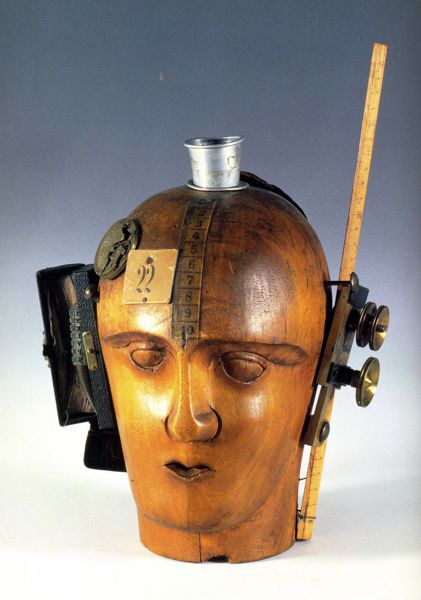“Each thing has its word, but the word has become a thing by itself. Why shouldn't I find it?”
The word “Dada” is not supposed to have a specific meaning. However, it defined and movement. Dadaism, as stated in the readings, was an art form against the art that was being made following World War I. It meant to show what was really happening in society, instead of creating beautiful paintings as if to mask what was really going on.
Raoul Hausmann is an artist from Dadaism.
To name some of the pieces he either created or edited are:
• 'DER DADA NO.2' 1919 (magazine cover) This piece directly attacks Expressionism. It says: “The Expressionists are tired people who have turned their backs on nature and do not dare look the cruelty of the epoch in the face. They have forgotten how to be daring. Dada is daring per se, Dada exposes itself to the risk of its own death”. I believe it’s very clear that the goal of the Dadaist artists was to express the concerns of society at that time. They didn’t want to hide people’s suffering by painting pretty things. In this magazine cover the word DADA is posted in capital letter and big size font, there are what it seems cuts of article.
• ‘The Spirit of Our Time', 1920 (assemblage) I found this one to be the most powerful of art forms explaining one of the issues Dadaists complained about. Here, Hausmann glues a series of objects such as a brass knob from a camera and a ruler to what seems to be a head of a wooden dummy. By attaching these objects to the outside of the head, he is sending the message that at the time, people weren’t able to do more than what was allowed for them to do. Their brains were blank, unable to do what was necessary to build a better Germany.
George Groz is another Dadaist, responsible for 'The Pillars of Society' 1926 (oil on canvas). In this painting he shows members of the armed forces, politicians and the press. In his painting certain details give away that it is supposed to expose the corruption going on and the hypocrisy of these important people
“Dada was an artistic movement that self-consciously styled itself as "anti-art" or art that defies conventional notions of artistic beauty and correctness”
As I stated before, Dada meant to show what really was going on in the society. It meant to show the ugly truth. Artists demonstrated with pictures and paintings that the situation wasn't pretty, they were brave in not hiding or trying to mask reality. I chose this quote because honesty is a precious virtue, and the fact that at a time where people were afraid of expressing themselves, there were artists that stayed true to themselves, and demonstrated courage by making such pieces.
